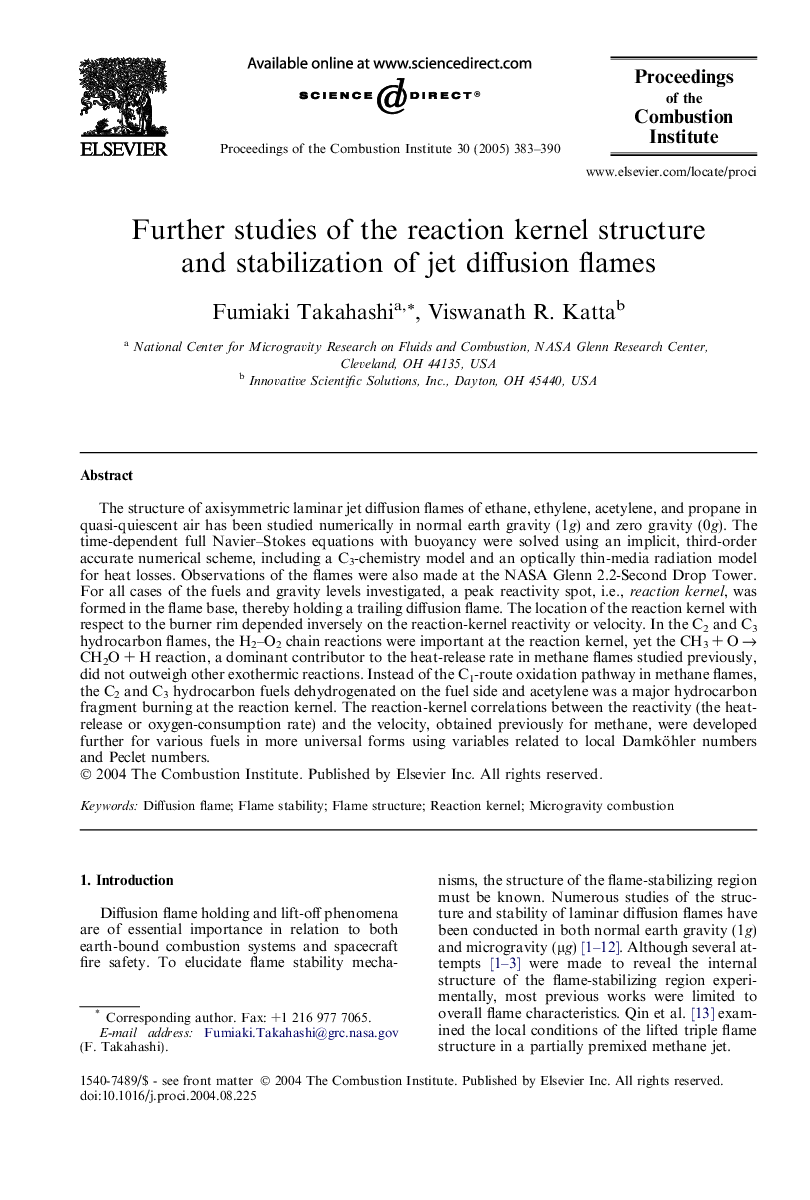| Article ID | Journal | Published Year | Pages | File Type |
|---|---|---|---|---|
| 9637357 | Proceedings of the Combustion Institute | 2005 | 8 Pages |
Abstract
The structure of axisymmetric laminar jet diffusion flames of ethane, ethylene, acetylene, and propane in quasi-quiescent air has been studied numerically in normal earth gravity (1g) and zero gravity (0g). The time-dependent full Navier-Stokes equations with buoyancy were solved using an implicit, third-order accurate numerical scheme, including a C3-chemistry model and an optically thin-media radiation model for heat losses. Observations of the flames were also made at the NASA Glenn 2.2-Second Drop Tower. For all cases of the fuels and gravity levels investigated, a peak reactivity spot, i.e., reaction kernel, was formed in the flame base, thereby holding a trailing diffusion flame. The location of the reaction kernel with respect to the burner rim depended inversely on the reaction-kernel reactivity or velocity. In the C2 and C3 hydrocarbon flames, the H2-O2 chain reactions were important at the reaction kernel, yet the CH3 + O â CH2O + H reaction, a dominant contributor to the heat-release rate in methane flames studied previously, did not outweigh other exothermic reactions. Instead of the C1-route oxidation pathway in methane flames, the C2 and C3 hydrocarbon fuels dehydrogenated on the fuel side and acetylene was a major hydrocarbon fragment burning at the reaction kernel. The reaction-kernel correlations between the reactivity (the heat-release or oxygen-consumption rate) and the velocity, obtained previously for methane, were developed further for various fuels in more universal forms using variables related to local Damköhler numbers and Peclet numbers.
Related Topics
Physical Sciences and Engineering
Chemical Engineering
Chemical Engineering (General)
Authors
Fumiaki Takahashi, Viswanath R. Katta,
